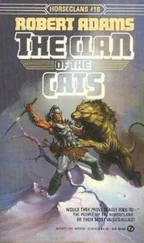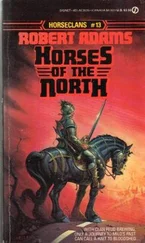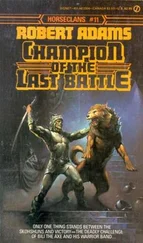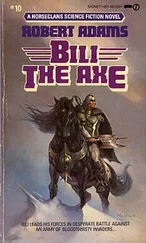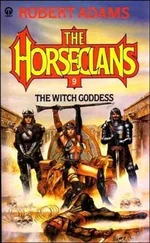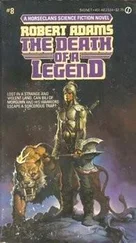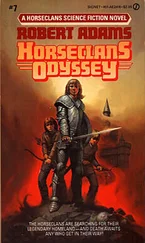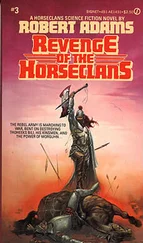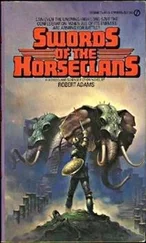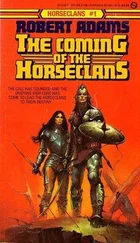Robert Adams - A Woman of the Horseclans
Здесь есть возможность читать онлайн «Robert Adams - A Woman of the Horseclans» весь текст электронной книги совершенно бесплатно (целиком полную версию без сокращений). В некоторых случаях можно слушать аудио, скачать через торрент в формате fb2 и присутствует краткое содержание. Жанр: Фантастика и фэнтези, на английском языке. Описание произведения, (предисловие) а так же отзывы посетителей доступны на портале библиотеки ЛибКат.
- Название:A Woman of the Horseclans
- Автор:
- Жанр:
- Год:неизвестен
- ISBN:нет данных
- Рейтинг книги:4 / 5. Голосов: 1
-
Избранное:Добавить в избранное
- Отзывы:
-
Ваша оценка:
- 80
- 1
- 2
- 3
- 4
- 5
A Woman of the Horseclans: краткое содержание, описание и аннотация
Предлагаем к чтению аннотацию, описание, краткое содержание или предисловие (зависит от того, что написал сам автор книги «A Woman of the Horseclans»). Если вы не нашли необходимую информацию о книге — напишите в комментариях, мы постараемся отыскать её.
A Woman of the Horseclans — читать онлайн бесплатно полную книгу (весь текст) целиком
Ниже представлен текст книги, разбитый по страницам. Система сохранения места последней прочитанной страницы, позволяет с удобством читать онлайн бесплатно книгу «A Woman of the Horseclans», без необходимости каждый раз заново искать на чём Вы остановились. Поставьте закладку, и сможете в любой момент перейти на страницу, на которой закончили чтение.
Интервал:
Закладка:
The agreement had stipulated that each chief might bring to the meeting, itself, no more than two advisers, although up to a score of his warriors might await him beyond the confines of the meetingplace. So eighteen nomads sat in the council circle deciding their mutual future, while some sixscore warriors squatted near their horses all around the perimeter. caressing their weapons and eying their counterparts warily, alert for any slightest hint of treachery.
Morai had brought along one warrior each from Skaht and from Krooguh as advisers. Skaht had his brother and another subchief, and Krooguh had with him Djahn and Tim Staiklee of Krooguh.
But all fears of imminent carnage were laid to rest when the dog-tribe spokesman—Kehvin Burk—arose and spoke his mind. “We are from the north, have always been, and the only reason we moved south this spring was in hopes of finding tribes of you cat-people to help us … help yourselves, too, for that matter. Problem is these damned farmers. They’re moving farther and farther out into the prairies, killing off, all the game, burning off the grasses and plowing up the land. You may not have seen too many of the buggers down south, here, but up north, they’re becoming thick as flies on a fresh-skinned carcass … and, mark my words, your turn will come, and maybe one hell of a lot sooner than you think. These farmers hate and fear all of us herding people, be we cat-people or dog-people, and no mistaking; so it’s a pure case of either we hang together now or we hang separate and high, later, but not too much later.
“Now, I’ve said what I came to say. Let’s hear from one of you cat-folk chiefs, say I.”
Wearing a broad, very friendly smile, Chief Milo of Morai arose. “Chief Kehvin, you echo my very own sentiments with regard to these abominable Dirtmen, these farmers, these foul despoilers of the prairies and plains …”
The conclave went on for all of that day and well into the night, then for several days and nights after. Before it was done, it had been joined by the chiefs of two more Kindred clans—Makaiuh and Fahrmuh—and a firm, mutually agreed-upon decision had been reached.
Milo Morai, Claim Skaht and Fahrmuh would join forces with the dog-tribe and return with them to the north to deal with the Dirtmen there, to try to persuade the agriculturalists that their attempted westward expansions were unhealthy if not downright fatal.
Meanwhile, Clan Makaiuh, the chief of which had not been excessively keen on trekking north this spring anyway, would move back southeast with Clan Krooguh to explore the possibilities of hunting and raiding in that sector.
Once the decisions were made, they were quickly enacted, for the large numbers of stock had all but exhausted the easily available graze. Within days, the clans were on the move.
XII
The spring became summer and that summer became autumn, then winter came once more and Wind sent blizzards howling down from the far north to slay men and women, children and babes, horses and cattle, sheep and goats.
But in the orderly, inevitable progression of the seasons, even the coldest and deadliest of winters at long last became spring again, with rushing streams of snowmelt temporarily turning portions of the prairie into one, vast sogginess before the thirsty roots of the billions of grasses sucked up the moisture and the land was once more covered from horizon to limitless horizon in an endless clothing of shades of rippling green.
And as season followed season, relentlessly so did year follow year on the prairie as on all of the earth.
The Horseclans roamed the prairies and the high plains, setting up their yurts or tents near to spring or creek or river only for the length of time it took the horses and stock to exhaust the nearby graze and their hunters—human and feline—the game and wild plants that made up much of their normal sustenance. Then the clans would pack up and move on. To north or to south, to east or to west, they moved, wherever the graze and the hunting and, sometimes, the raiding seemed best.
The life was in no way idyllic, far from it, in fact. Folk died in every season and in a multitude of ways, some of them exceedingly painful and protracted. The weak—very young or aged or injured from whatever cause—quickly succumbed to diseases, and there had been occasions when these diseases had extirpated all or most of entire clans of supposedly healthy folk, especially in winter camps, when the clanspeople were perforce packed tooth to jowl and contagions spread with terrifying rapidity.
Spring floodings and the unexpected quagmires drowned folk and stock, while summer brought flashfloods from the terrible storms and, even more fearsome, the lightning-spawned prairie fires which often swept on unchecked for countless miles, consuming all in their paths.
Raiding and warfare claimed lives and caused wounds, but not nearly so many of either as were brought about by the usual mundane occupations of herding and hunting. The stock of the nomad herds were nowhere near as docile, most of them, as were those of the Dirtmen; they had horns and hooves and the strength and will to use both to deadly advantage when angered or frightened.
Hunting injuries and deaths were second most commonplace, killing or maiming both horses and men and, more rarely, the great prairiecats, Due to the universal Horseclansfolk craving for snakemeat, cases of snakebite were fairly common, though few died of it. The majority of hunting casualties were sustained during mounted chases at high speeds over rough ground and resulted from rider or horse and rider falling.
The most dangerous game beasts were plains grizzlies, lions, shaggy-bulls, wild swine and the rare but much-feared monster predator of the far-northern plains called a “blackfoot” by the nomads.
Of this most dangerous list, only wild swine were hunted with any regularity, and then only if there were no Dirtmen nearby who could be raided for domestic swine. Like the wolves and other predators of the plains and prairies, Horseclansfolk left the bears and the lions alone if those beasts, in turn, left them and their stock alone; for these huge carnivores were possessed of formidable strength and always died hard; arrows alone seldom sufficed to deal them death, and going in to finish one at close range with a spear was not an undertaking designed or intended for the inexperienced, the weak of body or the fainthearted.
Fortunately, it was the rare grizzly or lion that forsook the bison, various antelope types and assorted deer species to go after cattle and the men who guarded them. But in the case of the sinister shaggy-bulls, the situation was reversed. The shaggy-bulls seemed to go deliberately out of their way to try to kill men and disrupt herds of cattle. The only good thing that could be said for them was that them were not very many of them even on the high plains where they were most common.
In some ways, they resembled the bison—shaggy coats, colors, thick bodies, the prominent hump over the shoulders—but they ran to far larger sizes than any bison, with adult cows standing up to sixteen hands at the withers and an average adult bull towering as much as four hands higher. Both sexes bore wide-spreading horns, and all were, considering their weights and bulks, amazingly fast and agile in a fight. They were not herd animals, but rather traveled in small groups when not alone.
The long horns of the shaggy-bulls could be fashioned into exceptionally deep-voiced bugles; their hides were the source of the strongest leather known to the nomads, and justly proud was the man who had armor or target made of it. The meat they yielded was choice, and shaggy-bull sinews were selected for the finest hornbows. But the cost of killing one was always high.
Читать дальшеИнтервал:
Закладка:
Похожие книги на «A Woman of the Horseclans»
Представляем Вашему вниманию похожие книги на «A Woman of the Horseclans» списком для выбора. Мы отобрали схожую по названию и смыслу литературу в надежде предоставить читателям больше вариантов отыскать новые, интересные, ещё непрочитанные произведения.
Обсуждение, отзывы о книге «A Woman of the Horseclans» и просто собственные мнения читателей. Оставьте ваши комментарии, напишите, что Вы думаете о произведении, его смысле или главных героях. Укажите что конкретно понравилось, а что нет, и почему Вы так считаете.

